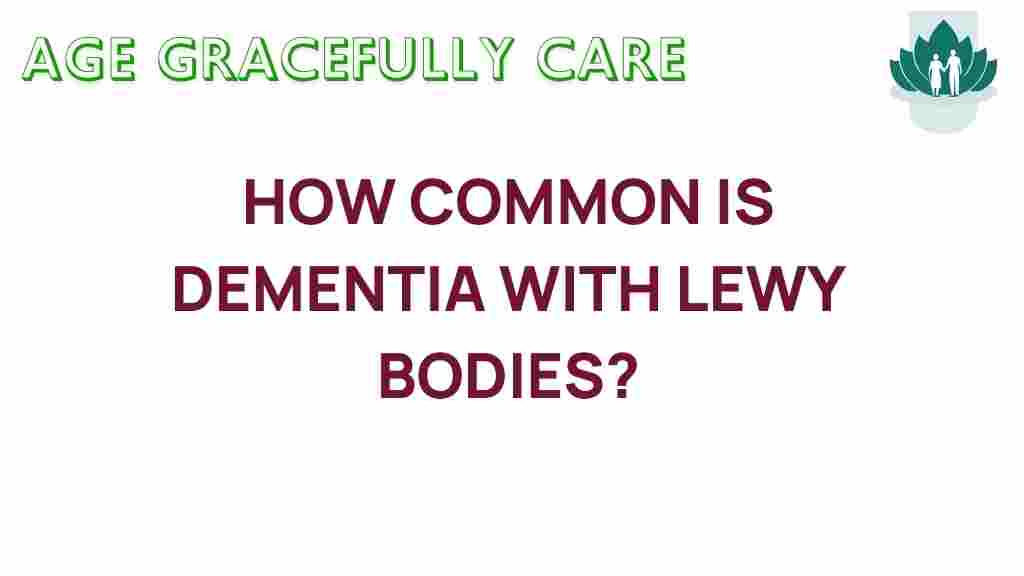Unveiling the Mystery: How Common is Dementia with Lewy Bodies?
Dementia is a term that encompasses various cognitive disorders, one of which is dementia with Lewy bodies (DLB). This neurodegenerative disorder is often misunderstood and misdiagnosed, leading to a lack of awareness about its prevalence and effects. Understanding the symptoms, diagnosis, and treatment of DLB is crucial in raising awareness and improving the lives of those affected by this condition. In this article, we will explore how common dementia with Lewy bodies is, its symptoms, diagnosis, and treatment options available.
What are Lewy Bodies?
Lewy bodies are abnormal protein deposits found in the brain that disrupt normal brain functions. They are primarily associated with two major neurodegenerative disorders: Parkinson’s disease and dementia with Lewy bodies. These protein aggregates are composed of alpha-synuclein, a protein that plays a role in various neuronal functions. The presence of Lewy bodies can lead to significant cognitive decline, impacting daily life.
Prevalence of Dementia with Lewy Bodies
Determining the prevalence of dementia with Lewy bodies is essential for understanding its impact on society and healthcare systems. Studies indicate that DLB accounts for approximately 10-15% of all dementia cases. However, its prevalence may be underreported due to misdiagnosis and the overlap of symptoms with other types of dementia, such as Alzheimer’s disease and Parkinson’s disease dementia.
- In the United States, it is estimated that over 1 million individuals may be living with DLB.
- The condition is more common in older adults, typically affecting those over the age of 60.
- DLB is characterized by fluctuations in cognitive abilities, which can complicate diagnosis.
Symptoms of Dementia with Lewy Bodies
The symptoms of dementia with Lewy bodies can vary widely among individuals, but they often include the following:
- Cognitive Decline: Individuals may experience memory loss, difficulty with problem-solving, and impaired judgment.
- Visual Hallucinations: Many people with DLB report seeing things that are not there, which can be distressing.
- Motor Symptoms: Symptoms similar to Parkinson’s disease, such as rigidity, tremors, and bradykinesia (slowness of movement).
- Fluctuating Attention and Alertness: Patients may exhibit periods of confusion or drowsiness.
- Sleep Disturbances: Issues such as REM sleep behavior disorder are common.
Recognizing these symptoms early is crucial for timely diagnosis and management of dementia with Lewy bodies.
Diagnosis of Dementia with Lewy Bodies
Diagnosing dementia with Lewy bodies can be challenging due to its similarity to other neurodegenerative disorders. A thorough evaluation typically includes:
- Medical History Review: Understanding the patient’s medical history and any previous cognitive issues.
- Neurological Examination: Assessing motor functions, reflexes, and cognitive abilities.
- Cognitive Tests: Standardized tests to measure cognitive function, memory, and problem-solving skills.
- Brain Imaging: MRI or CT scans may be used to rule out other conditions and to look for changes indicative of DLB.
Because of the fluctuating nature of symptoms, a combination of these assessments is often necessary for an accurate diagnosis.
Treatment Options for Dementia with Lewy Bodies
While there is currently no cure for dementia with Lewy bodies, various treatment options can help manage symptoms and improve the quality of life for those affected. Treatment plans may include:
- Medications: Cholinesterase inhibitors, such as donepezil, can help improve cognitive function and manage symptoms. However, caution is advised due to the potential for adverse reactions.
- Antipsychotic Medications: These may be prescribed to manage hallucinations, but they can worsen motor symptoms, necessitating careful management.
- Physical Therapy: Engaging in physical therapy can help patients maintain mobility and manage motor symptoms.
- Supportive Therapies: Cognitive stimulation therapy, occupational therapy, and support groups can provide emotional and practical support.
It is essential for caregivers and family members to be involved in the treatment process, as they can help monitor symptoms and manage care effectively.
A Step-by-Step Approach to Managing Dementia with Lewy Bodies
Managing dementia with Lewy bodies involves a comprehensive approach that addresses medical, emotional, and practical needs. Here’s a step-by-step guide:
- Seek Professional Help: If you or a loved one exhibit symptoms of cognitive decline, consult a healthcare professional for an evaluation.
- Get a Proper Diagnosis: Ensure a thorough assessment is conducted to confirm the diagnosis of DLB.
- Develop a Care Plan: Work with healthcare providers to create a personalized care plan that addresses symptoms and improves quality of life.
- Involve Family and Caregivers: Educate family members and caregivers about DLB to ensure they understand the condition and can provide adequate support.
- Explore Treatment Options: Discuss medication and therapy options with healthcare professionals to find the most effective strategies for symptom management.
- Regular Monitoring: Schedule regular follow-ups to monitor the progression of the disease and adjust treatment as necessary.
Awareness and Support for Dementia with Lewy Bodies
Raising awareness about dementia with Lewy bodies is vital for improving diagnosis, treatment, and support. Here are some ways to increase awareness:
- Community Education: Host workshops or informational sessions in communities to educate the public about DLB.
- Support Groups: Encourage the formation of support groups for individuals and families affected by DLB to share experiences and resources.
- Online Resources: Utilize online platforms to disseminate information about DLB, its symptoms, and available support systems.
For more information on dementia with Lewy bodies and other neurodegenerative disorders, consider visiting the Alzheimer’s Association.
Conclusion
Dementia with Lewy bodies is a complex and often misunderstood condition that significantly impacts those affected and their families. Understanding its prevalence, symptoms, diagnosis, and treatment can lead to better management and support for individuals living with this neurodegenerative disorder. Increasing awareness is essential to improve diagnosis rates and foster a supportive environment for those battling cognitive decline. By taking proactive steps, we can enhance the quality of life for individuals with dementia with Lewy bodies and their caregivers.
For further learning and resources, you can explore more on dementia awareness.
This article is in the category Health and created by AgeGracefullyCare Team
